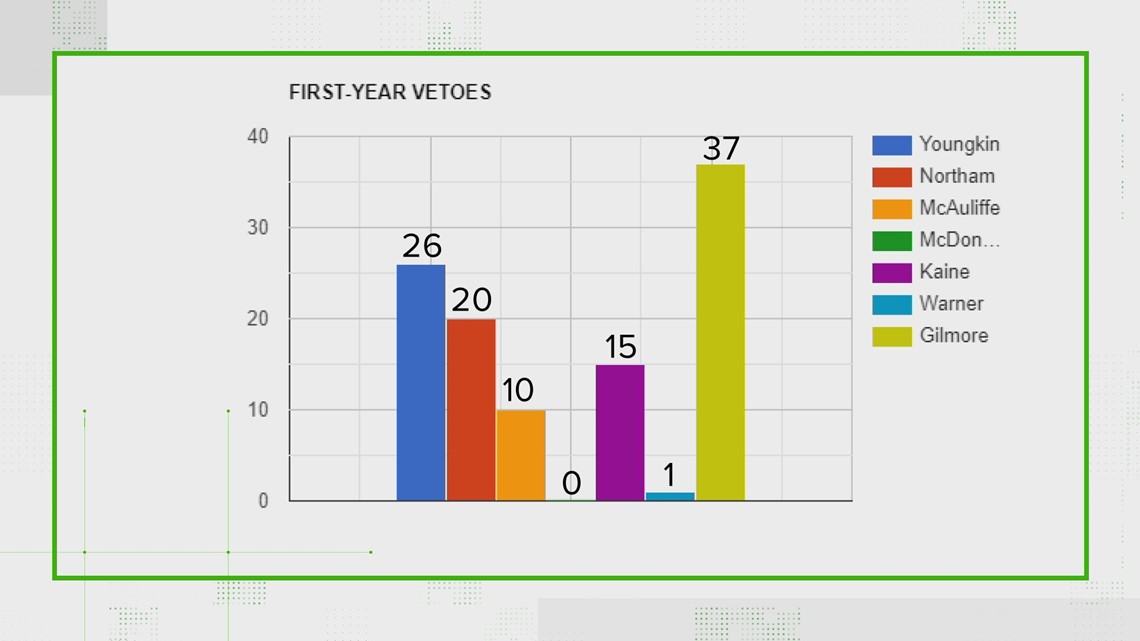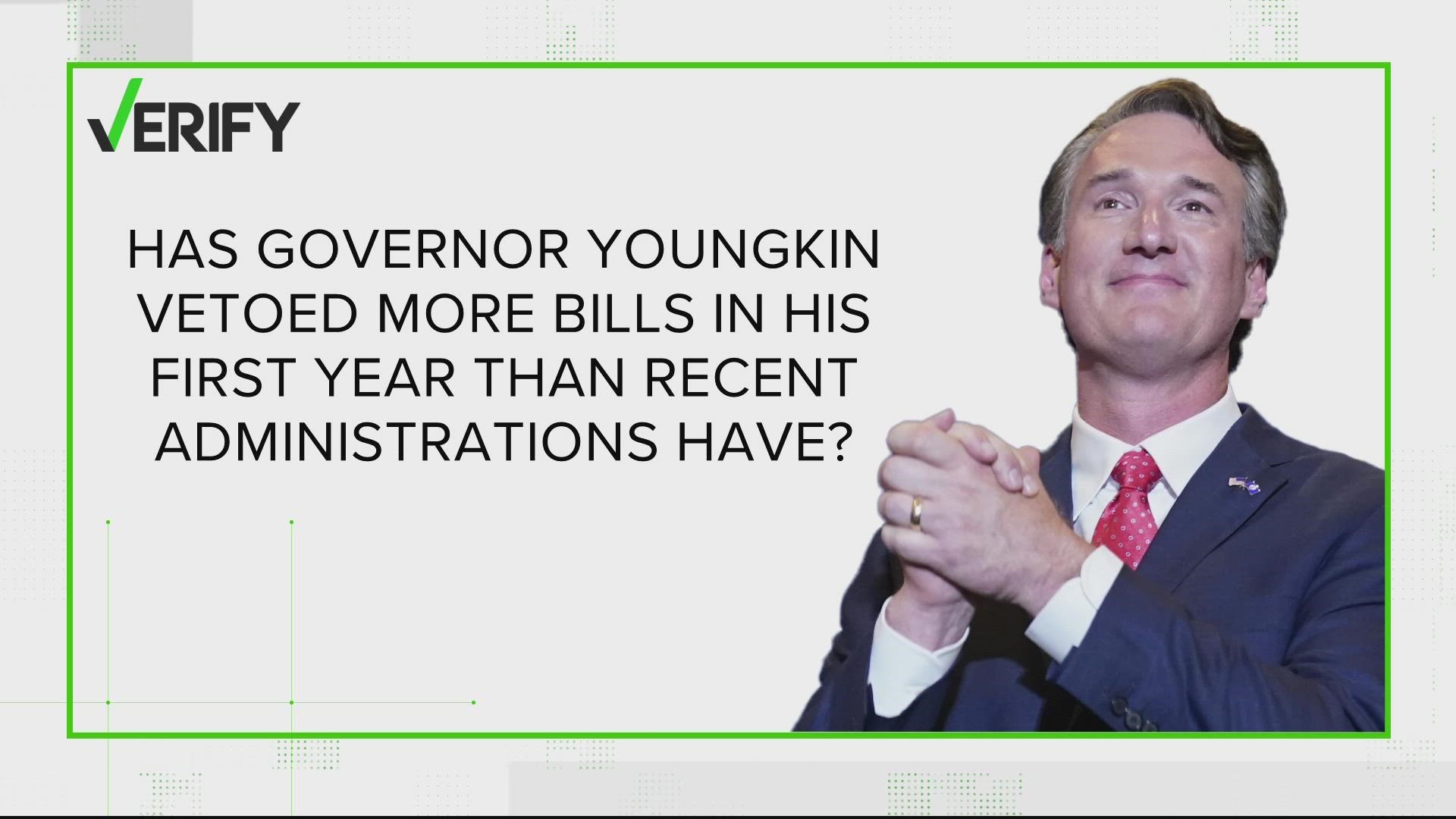RICHMOND, Va. — Republican Governor Glenn Youngkin used his veto power to stop 26 bills, sparking outrage from many Democrats. Many of these bills were passed with overwhelming bipartisan support and were approved by both chambers, including the Republican-controlled House of Delegates.
We Verify how this slew of vetoes compares to actions taken by past governors of both parties.
QUESTION:
Has Gov. Youngkin vetoed more bills in his first year in office than in recent administrations?
SOURCES:
- 2022 Session Vetoes, Virginia's Legislative Information System
- Constitution of Virginia, Virginia's Legislative Information System
- Karen Hult, Department of Political Science at Virginia Tech
- Alex Keena, Department of Political Science at Virginia Commonwealth University
ANSWER:
Yes. Gov. Youngkin signed more vetoes in his first year than the last five governors. In 1998, Gov. Jim Gilmore vetoed more bills in his first year, with 37.
WHAT WE KNOW:
On social media, Governor Glenn Youngkin has been trending, as there's been a lot of conversation about his 26 vetoes. This included numerous vetoes on bills that had bipartisan support.
To put this in context, we looked to data on the Virginia Legislative Information System, which shows the number of vetoes signed by each governor, broken down by legislative session.
The 26 vetoes from Gov. Youngkin are greater than the first-year levels of the past five governors.
"These are noticeably more vetoes than governors in the recent past," said Karen Hult from Virginia Tech.
- Youngkin (2022): 26 first-year vetoes
- Northam (2018): 20 first-year vetoes
- McAuliffe (2014): 10 first-year vetoes
- McDonnell (2010): 0 first-year vetoes
- Kaine (2006): 15 first-year vetoes
- Warner (2002): 1 first-year veto
- Gilmore (1998): 37 first-year vetoes
- Allen (1994): 32 first-year vetoes
"Of the 26 bills that the governor vetoed," said Hult. "Six of them had unanimous approval in both chambers, both the Democratic Senate and the Republican House of Delegates."


A full list of the vetoed bills can be found on the Virginia LIS website here. They included many bills which were passed unanimously, or with significant bipartisan support in both chambers.
A spokesperson for Youngkin pointed our team to a series of veto statements, as an explanation for each individual bill.
"Virginians elected the Governor to bring a fresh perspective and outsider experience to governing," the spokesperson said.
OVERRIDING A VETO:
On social media, a lot of people were questioning whether the legislature could override the governor's vetoes. To find out, our team turned to the Virginia Constitution.
Article V, Section 6 reads as follows, in the section related to vetoed bills:
"The Governor may veto the bill if he objects to it by returning the bill with his objections to the house in which the bill originated. The house shall enter the objections in its journal and reconsider the bill. The house may override the veto by a two-thirds vote of the members present, which two-thirds shall include a majority of the members elected to that house. If the house of origin overrides the Governor's veto, it shall send the bill and Governor's objections to the other house where the bill shall be reconsidered. The second house may override the Governor's veto by a two-thirds vote of the members present, which two-thirds shall include a majority of the members elected to that house. If both houses override the Governor's veto, the bill shall become law without his signature. If either house fails to override the Governor's veto, the veto shall stand and the bill shall not become law."
Since most of the vetoed bills had substantial bipartisan support in both chambers, it is conceivable that the legislature can override some or all of the vetoes.
"It really is just a two-thirds majority vote and it becomes law," said Alex Keena from Virginia Commonwealth University. "It doesn't go back to the governor's desk. It just automatically becomes law."
To read through the vetoed bills, visit here.

